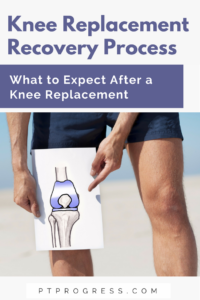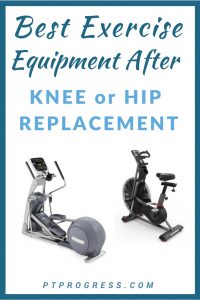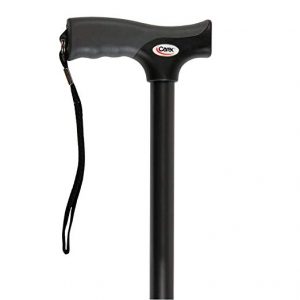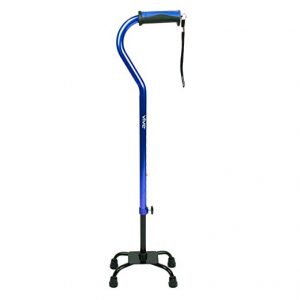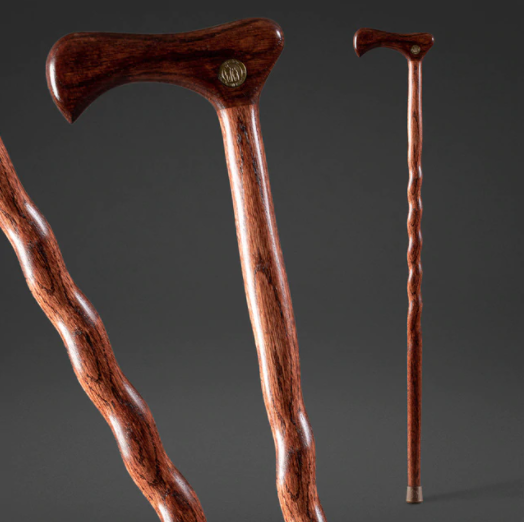As a Physical Therapist, I work with people right after a knee replacement or hip replacement to help them return to walking. Every week I’m asked the question “what is the best cane for a knee replacement”, so I’ve gathered my suggestions and compiled them in this quick article to help you in deciding what style cane to use after your surgery.
Top 3 Canes After Knee Replacement
When you’re deciding on a cane you need to consider these 3 factors:
- The cane should be solid, not collapsable
- The foot (base) needs to be stable, not flexible
- If you’ve seen it on TV, avoid it.
Seriously! You might read articles that promote Canes You’ve Seen on TV, but please don’t buy one of these canes.
You need a cane that is sturdy and safe. In my Physical Therapy clinic, I recommend these 3 canes to my patients because they’re solid, safe, and affordable.
No, these canes aren’t glamorous or fancy, but after a hip or knee replacement, most people only use a cane for a few weeks. So consider one of these canes after your joint replacement:
Medline Offset Handle Cane
You can’t go wrong with this cane. It’s a standard cane that provides excellent support with a solid design. They’re lightweight and easy to maneuver. This cane has a 250# weight max so if you need a cane that is more supportive, consider this cane for larger users: NOVA Heavy Duty Offset Cane (Supports 500 lbs).
Carex Soft Grip Derby Cane
The handle on this cane is slightly different, a style known as a ‘derby cane.’ I personally feel that these are more comfortable to use as the shaft of the cane is directly in line with my arm. For the younger or more active person, this cane is an excellent option because it’s lightweight, sturdy, and slightly more discreet than the offset handle cane I’ve shared above.
Adjustable Quad Cane by Vive
A quad cane has 4 legs that provide more stability for the user. I recommend this cane when someone has poor balance and needs more support than the average person. The structure is just like the offset handle cane I share above, but the four points at the bottom gives the user a significant boost in stability. I have recommended this cane to people of all ages (60 to 95+), and consider it a ‘go to’ cane when I’m working with a patient who has very poor balance.
Custom Wooden Cane by Brazos
If you want a beautiful custom wooden cane, I recommend Brazos to my patients in my physical therapy clinic. I personally own one of their canes and as a woodworker myself, I really appreciate the craftsmanship in their products. You can get 14% off when you use the PTProgress discount here.
Avoid These Canes After Joint Replacement
Hurrycane Collapsible Cane
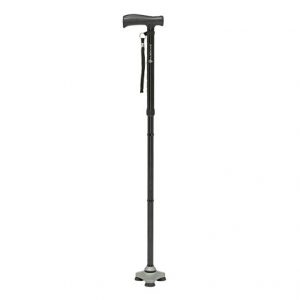
Adjustable Walking Cane Baston ProX2 by Silverfeat
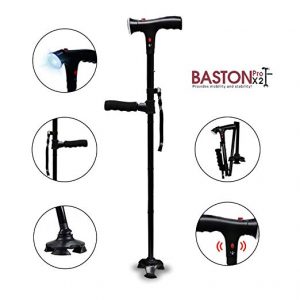
These might be a useful cane for some people, but it’s not a cane that I would recommend after a knee replacement.
It simply does not meet the standards or criteria I’ve set for choosing the right cane after a joint replacement.
Remember my criteria:
When you’re deciding on a cane you need to consider these 3 factors:
- The cane should be solid, not collapsable
- The foot (base) needs to be stable, not flexible
- If you’ve seen it on TV, avoid it.
How Long Do I Use a Cane after a Knee Replacement?
After a knee replacement, you’ll start walking with a walker within a day or two following your surgery. The transition to a cane can happen relatively quickly (within 1 to 2 weeks) but depends on a few factors:
- Are you stable with just a cane?
- Can you use the cane without increasing pain in the knee?
- Can you walk properly with the cane? (no limp or sway)
Once you’re ready for the cane, you may only need to use it for a couple of weeks.
For the majority of people who have their knee replaced, the goal is to walk again without the support of a cane or walker, so you may only use the cane for a short period of time.
Your PT will watch to see if you’re ready to stop using the cane based on a few criteria:
- Can you walk without a limp or lean?
- Can you walk without increased pain or discomfort in the knee?
- Are you stable with walking or do you lose your balance easily?
How to Use a Cane Properly
- Place the cane in the hand opposite of your replaced knee or hip.
- Adjust the height of the cane so that it reaches the crease in your wrist.
- Place the cane in front of you about 8 inches as you step with the opposite leg.
- The cane should touch the ground whenever your newly replaced knee/hip steps on the ground.
- Avoid leaning on the cane or putting excessive pressure through your wrist.
Keep reading for more information on what to expect after a knee replacement.
